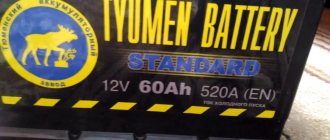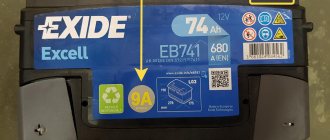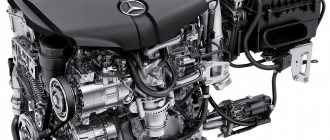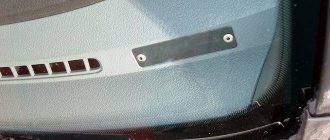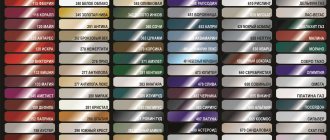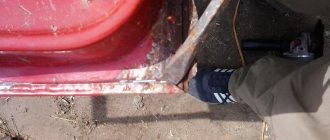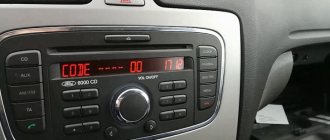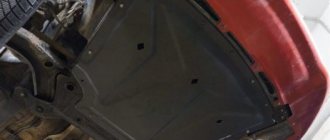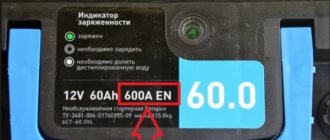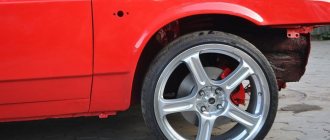Each battery manufacturer puts a special code on its battery, which is called a marking. Technologically, markings can either be burned out with a laser (like the markings on Tyumensk-Medved), or melted into cliches (like Kursk batteries). As a rule, the release date is marked upon the battery’s readiness, that is, it is factual, but in practice, some factories sin and put a release date from the future, which allows them to sell batteries even if they were produced 2 months ago. Most likely, this is done in the summer-autumn period in order to optimally load production and stock up on batteries for the season.
It is believed that the fresher the battery, the higher its cost, so they often try to get rid of old batteries at low attractive prices. During storage, the battery loses part of its capacity due to chemical processes occurring inside. For example, batteries made using hybrid technologies can be stored for 6 months without loss of quality, calcium batteries – 12 months. At the same time, Johnson Controls (manufacturer of Varta, Bosch, Energizer and other brands) reports that their batteries can be stored for 18 months. In fact, this is only a marketing ploy and a tool to make it easier for dealers to sell “stale” batteries that reach store shelves through a long route.
Therefore, when planning to purchase a new battery, be sure to take a printout of the battery production date markings to the store. This will allow you to make the right choice.
In addition to marking production dates, batteries have markings in accordance with accepted standards (GOST, SAE, DIN, EN, JIS), which our site will write about a little later.
This article provides examples of markings used since 2014, since in 2015 there were serious changes in the battery market, and some owners of private brands changed manufacturing plants.
- Forse, FB, FireBall, Uno, Dominator, Kursk battery
- Tyumen bear, Tyumen Batbear, Arctic Batbear, Yamal
- Aktech, Orion, Beast
- Cobat, Titan (Standard, Euro Silver, Arctic Silver, Asia Silver, Vaiper)
- VARTA, BOSCH
- Mutlu
- Panasonic, Furukawa Battery (SuperNova)
- Topla, Moratti
- Banner
- Atlas, Bost, Numax
- Akom (Forward, Bravo, Reactor)
- Bars, Unikum (Kainar)
- Tyumen Battery Plant (Tyumen Battery batteries)
- How to find out the year and month of manufacture for batteries E-Lab, Razor, MAQ, Onics, Odin and others from the Bars Technology factory
- Battery marking European standard EN
- American standard SAE J537
Forse, FB, FireBall, Uno, Dominator, Kursk battery
The marking code is applied to the battery cover and includes:
battery production date,
information about the battery and production conditions.
The code consists of two groups of numbers: the first group has four digits, the second group has six digits: 1234 567890.
Marking scheme:
1 – production line number
2, 3, 4 – individual batch code
5 – last digit of the year
6 – half year
7 – serial number of the month in the half-year
| First half of the year | Second semester | ||
| 1 | January | 1 | July |
| 2 | February | 2 | August |
| 3 | March | 3 | September |
| 4 | April | 4 | October |
| 5 | May | 5 | November |
| 6 | June | 6 | December |
8.9 - day (day of the month)
0 — brigade number (2 digits possible)
Marking example:
2260 311321
Explanation:
The battery was produced on production line No. 2, 260 - individual batch code. Date of manufacture: 2013, 1st half of the year, 1 month, 21st (January 21, 2013). Brigade No. 1
In connection with the transfer of production to the Kursk plant, the labeling system has been changed since 2015:
Example: 0713 1 25346 0713 is the production date of the battery, where 07 is the month, 13 is the shift number 25346 is the serial number of the manufactured battery. The serial number is reset to zero at the beginning of each month.
The heavy group of batteries is marked slightly differently.
An example of marking a heavy battery group:
14010243
Explanation:
The battery has a capacity of 140 A/h, produced in 2010, 2nd half of the year, 4th month of the second half of the year (October), by brigade No. 3.
Optima
The date marking of Optima batteries is extremely simple: 4 digits are stamped on the side of the case. The first is the year of production, the other three are the serial number of the day of the year.
For example, 9141 is stamped on the case, which means the battery was released on 141 days of 2022, that is, May 21, 2022.
An example of Optima battery marking:
Tyumen Battery Plant (Tyumen Battery batteries)
The first two digits are the month of production, the next two are the year, the next two are the month, and the last digit is the shift.
Gillette Magico, Extra Start, Graisburg, Golden Horse, Asian Horse, Black Horse, Power Horse, White Horse SOMBOR battery factory (Serbia)
Place of marking on the cover: 1,2 - last digits of the year, 3,4 - week of the year, 5,6 - service information. Example: 115022 - 2011, week 50 (end of December).
Pilot, Pilot Silver, Elektroistochnik LLC "Elektroistochnik", Russia, Saratov
The place where the marking is applied is the top cover of the case. Example: ZALITA 0512 (May 2012).
Zubr LLC JV "Polesskie Batteries"
The location of the marking is the upper left corner of the battery cover. Example: 2G03E1. 2 – 2012, G – month (July), 03 – date, E – assembly line, 1 – capacity code (55 Ah). (A–January, B–February, C–March, D–April, E–May, F–June, G–July, H–August, J–September, K–October, L–November, M–December)
Trade in your old battery and get a discount from 400 to 2800 rubles.
The battery is not meat or bread, but it also has its own shelf life, because Inside this small but heavy box, chemical reactions and processes continuously take place.
Therefore, when purchasing a starter battery, you need to pay attention to its release date. An expired battery, as in the case of meat and bread, is wasted money and time. A “stale” “not fresh” battery can “sit down” at any moment. Moreover, for lead-acid batteries manufactured using traditional technology with the addition of antimony, the shelf life should not exceed 6-10 months. If the battery is with silver-alloyed plates - 12-15 months. Well, in the case of calcium batteries, their self-discharge is minimized, but still within a year or two such batteries run down to almost zero. But these storage periods should not be taken as a constant. In many ways, the shelf life (without periodic recharging) depends on the conditions in which the battery is stored.
In general, the consumer characteristics of the battery deteriorate so much after 2-3 years of storage in a warehouse that it is simply not recommended to buy a battery that has been stored for this or a longer period. Of course, there are exceptions, for example, BOSCH AGM batteries practically do not lose charge even after 3 years.
In other words, it is not recommended to take a “stale” product, and also, when purchasing a battery of any freshness, it is highly recommended before installing it on a car!
The battery labeling will provide all the necessary information. There are no uniform standards for marking batteries by production date; it is marked differently on different batteries. Most manufacturers indicate the date of manufacture of the battery in the form of a series of letters and numbers, and sometimes in the form of color coding.
The battery's manufacturing date may be indicated on the front label, stamped on the lid, or placed on a separate label on the side wall. There are no standards here.
The most common ways of marking information:
Forse, FB, FireBall, Uno, Dominator, Kursk battery, ISTOK, OPTIMUM Kursk Battery Plant LLC, Russia
The code consists of two groups of numbers: the first group has four digits, the second group has six digits, for example: 1234 567890. Marking scheme: 1 – production line number 2, 3, 4 – individual batch code 5 – last digit of the year 6 – half-year 7 – serial number of the month in the half-year: First half of the year: January 1, February 2, March 3, April 4, May 5, June 6 Second half of the year: July 1, August 2, September 3, 4 -October, November 5, December 6 8,9 - day (day of the month) 0 - brigade number (2 digits possible)
Marking example: 2260 311231 Explanation: The battery was produced on production line No. 2, 260 is the individual batch code. Date of manufacture: 2013, 1st half of the year, 1 month, 23rd (January 23, 2013). Brigade No. 1
The heavy group of batteries is marked slightly differently. An example of marking a heavy battery group: 14010243 Explanation: The battery has a capacity of 140 A/h, produced in 2010, 2nd half of the year, 4th month of the second half of the year (October), by brigade No. 3.
In connection with the transfer of production to the Kursk plant, the marking system has been changed since 2015: Example: 0713 1 25346 0713 is the date of battery production, where 07 is the month, 13 is the shift number 25346 is the serial number of the manufactured battery. The serial number is reset to zero at the beginning of each month.
Tyumen bear, Tyumen Batbear, Arctic Batbear, Yamal, Buran, Space ZAO MPKF Alkor, Tyumen, Russia
The marking code is applied to the battery case on the opposite side of the central label using laser perforation. The six digits on the back of the battery stand for MM.YYYY. Example of marking: 102011 Explanation: Date of manufacture - October 2011.
An example of marking for a heavy battery group: 1112 Explanation: Released in the 11th month of 2012.
Aktech, Orion, Beast, Spark, Tornado, Solo, Duo Extra – AkTech LLC, Irkutsk, Russia
The marking code is printed on the top cover. Rechargeable batteries from the Aktech plant are labeled according to the MM.YY principle. Example of marking: 0511 Explanation: Date of manufacture - May 2011.
Cobat, Titan (Standart, Euro Silver, Arctic Silver, Asia Silver, Vaiper) Nizhny Novgorod region, Bor, .
Since August 2011, the manufacturing date has been applied to Tubor batteries using a printer and a special alphanumeric combination. Placement: on the battery cover, in the center.
The code contains 5 characters: 12345 1 – day of the week 2, 3 – serial number of the week in the year (from 01 to 53) 4 – year (Latin letter): 2011 (H), 2012 (V), 2013 (N), 2014 ( Z), 2015 (P), 2016 (A), 2022 (S), 2018 (T), 2022 (X), 2022 (L). 5 – shift number. Example of marking: 208N1 Explanation: 2 - Tuesday 08 - eighth week N - 2011 1 - first shift. The battery was released on February 22, 2011 on the first shift. Markings before August 2011: TITANIUM, TITANIUM ARCTIC 1, 2nd digits - number 3, 4th digits - month 5, 6th digits - year 7th digit - factory line
Varta, Bosch, Berga, Blackmax, Afa
The marking code is located on the top cover in the production code. The code consists of 24 characters, the fourth position indicates the year, the fifth-sixth - the month.
Example of marking: G2С1050520991 536528 82E 09 Explanation: 1 – 2011 05 – May. Date of manufacture: May 2011. On Bosch batteries, the production date is duplicated in the central part of the front sticker; it contains three numbers indicating the year and month of production. For example, 105 – May 2011. In addition, the production date of a Varta battery can be determined by the colored circle on the label or battery cover. The color of the circle corresponds to a specific quarter: I.2011 - green, II.2011 - red, III.2011 - pink, IV.2011 - white, I.2012 - gray, II.2012 - orange, III.2012 - yellow, IV. 2012 - blue, I.2013 - green, II.2013 - red, III.2013 - pink, IV.2013 - white, etc.
Full decoding of the entire code: The first letter is the territorial location of the Varta and Bosch plant: H - Germany (Hannover), C - Czech Republic (Czeska Lipa), S - Sweden (Halsfred), A - Austria (Vienna), F or R - France ( Rouen), E or G - Spain (Guardamar - Burgos); The next number is the conveyor number. The second letter is the specifics of shipment: V - for retail sales, E - for assembly at car factories, C - manufactured to order of a partner. This is again followed by a number - the last digit in the numbering of the year (year of manufacture), the third and fourth digits - the serial number of the month: 01-January, 02-February, 03-March, 04-April, 05-May, 06-June, 07- July, 08-August, 09-September, 10-October, 11-November, 12-December; The fifth and sixth digits are the day of the month, the seventh digit is the shift number.
Since 2014, Varta and Bosch began to use a new coding for the battery manufacture date. In a long code it is 4,5,6 digits. 4th digit year of manufacture, 5th and 6th code of month of manufacture: January 17, February 18, March 19, April 20, May 53, June 54, July 55, August 56, 57-September, 58-October, 59-November, 60-December.
Some sources claim that in the 9-digit code, the first letter is also the place of production, and the second is the shipping details, as in the 24-digit one. The first digit is the conveyor number. The second letter is the territorial location of the Varta plant: H - Germany (Hannover) C - Czech Republic (Czeska Lipa) S - Sweden (Halsfred) A - Austria (Vienna) F or R - France (Rouen) E or G - Spain (Guardamar - Burgos ) The second digit is the last digit in the year numbering (year of manufacture). The third and fourth digits are the serial number of the month. The fifth and sixth digits are the day of the month. The seventh digit is the shift number. There was also an option for designating the date: 2 – 2002, 1 – 2001, 0 – 2000, etc. 81 - January, 82 - February, ... 90-October, 91 - November, 92 - December; 1 ... 31 – day of the month.
Mutlu Türkiye
The battery production date is marked with laser perforations on the top of the battery case. The code consists of six digits, the first of which is the line number, the second is the year, the third, fourth is the month, the fifth, sixth is the day.
Example of marking: 410819 Explanation: The battery was produced on the second line on August 19, 2011. Now batteries have a QR code that you can use to track the date of the battery.
Panasonic, Furukawa Battery (SuperNova, Super FB 7000 and 9000) Japan, Yokohama
The production code is located on the top of the label (on the lid). Moreover, on Panasonic batteries the code is painted, and on Furukawa Battery batteries it is embossed. Marked according to the principle YY.MM.DD
Example of marking: 160607A Explanation: The battery was manufactured on June 7, 2016.
Topla, Moratti Slovenia
On Topla batteries, the code is laser-etched onto the top of the case. Of the fourteen symbols, the third and fourth symbols indicate the year, and the fifth and sixth symbols indicate the week. Example of marking: F1110600941864 Explanation of marking: The battery was manufactured in the sixth week of 2011 (i.e. in February).
Four-digit Topla marking: 1, 2nd digits – year 3, 4th digits – week
Moratti Tab: Code F2 1222, in this code 12 – year, 22 week.
Shin-Cobe Since 01/01/2016 Shin-Kobe Electric Machinery Co. acquired by Hitachi Chemical Co.
Example of marking: 170408T Most likely, the encoding system is the same as that of Panasonic: DDMMYY are numbers. The decoding of the last character in the code (letters) is unknown.
Banner
The release date is deciphered by the first 4 letters of the English alphabet burned on the battery cover. Marking scheme: Like the serial number of each letter in English. alphabet: the 1st and 2nd letters indicate the week of the year; The 3rd and 4th letters are the last 2 digits of the year. The ordinal count of letters starts from 0, i.e.: A-0, B-1, C-2, D-3, E-4, F-5, G-6, H-7, I-8, J- 9, K-10, L-11, M-12 Labeling example: DEBC Labeling explanation: 34 weeks. 12 year old
Power Bull Plus, Power Bull Banner, Banner Batterien Austria
The location of the marking is the back wall of the battery. Example: 29T6211 0 – 29th week (beginning of July) of 2011 (T62 and 0 – service information).
Atlas, Bost, Numax Pakistan, Korea are part of the group of the Japanese company GS Yuasa.
Deciphering the code (based on the first 2 characters in the markings on the lid (under the handle)). The first character is the last digit of the year. The second character is (month) a letter of the Latin alphabet, the serial number of which is the number of the month: A - January, B - February, C - March, D - April, E - May, F - June, G - July, H - August, J - September, K - October, L - November, M - December, the letter “I” is not included in the markings. Example of marking: 2KJD24 Code interpretation: 2 - 2012, K - October.
Baren, Fiamm
Baren batteries are manufactured at the Fiamm plant. The country of manufacture of all batteries is Italy, there is also a plant in Austria. On Fiamm batteries, information about the production date is also present on the sticker at the top.
The 1st day is the year of production, the 2nd and 3rd are the week number, the 4th is a day in the week, the 5th is the work shift.
Exide, Centra
EXIDE Technologies (USA) owns the brands Absolute, American, BIG, Centra (Poland, Poznan), Champion, Chloride Motive Power, Deta, Emisa, Exide, Fulmen, Hagen, Luac Power, Marathon, Marshal, Exide Select Orbital, PAK, PCA , Prestolite, Saem, Sonnark, Sonnenchein, Sprinter, Trailblaizer, Tudor, York.
The code is located on the body. The first digit is the year of manufacture, the second letter is the month (A-January, B-February, C-March, D-April, E-May, etc.).
In the new numbering system: on the negative terminal at the top, two two-digit numbers are knocked out in two lines, separated by a line (in two lines): 44/15 - “44”, below is a horizontal dividing strip, below it is “15”. This means the 44th week of 2015. Also:
Tudor Portugal, the trademark belongs to Exide, is produced on Exide equipment at the Zubr plant in Belarus.
Alphanumeric code, where the second letter is the year: V - 2008, W - 2009, X - 2010, Y - 2011, Z - 2012, A - 2013, B - 2014, etc.; The fifth letter is the month of issue: from A to L (A-January, B-February, C-March, D-April, E-May, F-June, G-July, H-August, I (skipped)-September, J-October, K-November, L-December). Example: OY24HPX66J - release date August 2011.
Steco France
Six-digit code: 1st digit - line, 2nd, 3rd digits - week, 4th digit - day of the week, 5th digit - year of manufacture, 6th digit - battery type.
Solite Korea
Code structure: 1. Letter - plant (K-Gyeongju Plant) 2. Line number (A - 1st line, B - 2nd line, etc.) 3 and 4. Letter and number. The number of the month of issue: W=0, X=10, Y=20, Z=30 are tens, and the number is units. 5. Letters I - T. Month of issue: I-January, J-February, L-April, M-May, N-June, O-July, R-August, Q-September, R-October, S-November, T-December. 6. Year of manufacture (last digit of the year 0 - 9) 7. N - night shift (day shift is not indicated) Example of Solite marking: KCW3LOH K - Plant in Gyeongju, C - 3rd line, W3 - day of the month - 23, L - April, 0 – 2010, H – night shift. As of November 2015, apparently, they stopped indicating the night shift: The penultimate letter means the month of production: I - T - month of production (I-January, J-February, K-March, L-April, M-May, N-June, O-July, P-August, Q-September, R-October, S-November, T-December). The last digit is the year of production 4 - 2014 5 - 2015 There are markings that do not have the first letter “K”.
A-mega (A-Mega Auto) Megatex LLC, Ukraine
Markings on the battery cover: The first, second and third digits are the day of the year. The fourth and fifth digits are the last digits of the year. Example: 210/12 - day 210 (end of July) 2012.
Sznajder Sznajder brand batteries are produced at the Polish plant ZAP SZNAJDER BATTERIEN SA
The code is located on the front side of the battery cover on the label side. The marking is applied using hot stamping and a digital type of marking is used, consisting of 10 (ten) digits. 1,2,3,4 digits – factory internal battery code (amps/hours and battery housing). For example: 0555 is a 55A/H battery in block L1; 0563 is a 62 A/H battery in block L1; 0572 is a 75 Ah battery in the L2 block. 5 digit – grille type. For example: 5 – SCX grille (SBX... etc.). The 6th digit is the shift that assembled the battery. For example: 1 – first shift, 2 – second shift, 3 – third shift. The 7th, 8th, 9th digits are the day of the year. For example: 280 – October 7 Subtracting one from the 10th digit determines the year in which the battery was produced. For example: 1 means that the battery was produced in 2010 or 0 means that the battery was produced in 2009. The last four digits indicate the date the battery left the assembly line (battery assembly - battery block and plates in it). Subsequent technological cycles of bringing the battery until it is fully ready for sale are taken into account by the plant separately.
Global Korea
The code is on the cover. The third digit is the year, the fourth letter is the month (A-January, B-February, C-March, -D-April, E-May, etc.).
Moll Germany
Marking on the negative terminal: The first and second digits are the week (01-53), the third and fourth digits are the year.
Delphi Freedom Delphi Automotive Systems, Poland
The marking location is the upper part of the housing on the indicator side in the corner farthest from it. Example: 16 2GF, where 16 is the day of the month, 4 is the last digit of the year (2012), G is the month (July), F is the country of origin (France). (A–January, B–February, C–March, D–April, E–May, F–June, G–July, H–August, I–September, J–October, K–November, L–December)
Inci Aku Exmet, Ultra Hugel Inci Exide Türkiye
The location of the marking is near the positive terminal. Example: 17 10 12 (October 17, 2012).
Ista Standart DOZ Energoavtomatika LLC, Ukraine
The place where the marking is applied is the top cover, above the label. Example: 2144, where 2 is the production number, 4 is the last digit of the year (2011), 44 is the week number (November). For batteries produced by CJSC "ISTA-Center", the marking is different, for example: 131224, where 1 is the production number, 3 is the team number, 12 is the year of manufacture, 24 is the week number (beginning of June).
Medalist, Delkor American-Korean joint venture: Delkor plant is a subsidiary of Johnson Controls (USA) in South Korea.
The location of the marking is on the side of the body. Example: 12.2011: 12 – month (December), 2011 – year.
PAZ, Selenius JSC "Podolsk Battery Plant" (PAZ), Russia
The place of marking is the longitudinal side of the lid. Example: OTK040112, where OTK04 is the stamp and number of the controller, 0112 is the month and year of manufacture (January 2012).
Tyumen Battery JSC Tyumen Battery Plant, Russia
The place of marking is the longitudinal side of the cover. Example: 12 11 09 5, where 12 is the month (December), 11 is the last digit of the year (2011), 09 is the day, 5 is the brigade number.
Akom (Forward, Bravo, Reactor) JSC "AKOM", Russia
The release date is on the top of the cap. 6 numbers and a letter: 1,2 – month; 3.4 – year; 5.6 – day; letter - shift code. Example: 07 14 15 M would read 15 July 2014
Amur JSC "Komsomolsk-on-Amur Battery Plant", Russia.
The location of the marking is at the positive terminal. Example: 02 12, where 02 is the month (February), 12 is the year (2012).
ZiD JSC "Plant named after. V.A. Degtyarev", Russia.
The place where the marking is applied is the top cover of the case. Example: 0112 – January 2012.
Zubr LLC JV "Polesskie Batteries", Belarus.
The location of the marking is the upper left corner of the battery cover. Example: 2G03E1. 2 – 2012, G – month (July), 03 – date, E – assembly line, 1 – capacity code (55 Ah). (A–January, B–February, C–March, D–April, E–May, F–June, G–July, H–August, J–September, K–October, L–November, M–December)
Cathode JV "UzExid" under the control of NPO "Cathod" LLC.
The location of the marking is on the side of the body. The batteries arrive from the factory in dry (unfilled) form, and are filled in St. Petersburg at the production facility of NPO Katod. An example of marking is “Filled, charged December, 2011.”
Champion Pilot Drive, Power International Bronze Dong Ah Tire& Rubber Co., Ltd, Korea
The marking location is on the top of the cover opposite the pole terminals. The battery arrives in Russia dry-charged - the filling date is indicated on the side of the label. Example: (marking the date of manufacture, not pouring!) B2D01, where: B – production line number, 2 – 2012, D – month (A – January, B – February, C – March, D – April, E – May , F – June, G – July, H – August, I – September, J – October, K – November, L – December), 01 – official information. Example: (filling date marking) “filled, charged 07.12.”
Pilot, Pilot Silver, Elektroistochnik LLC "Elektroistochnik", Russia, Saratov
The place where the marking is applied is the top cover of the case. Example: ZALITA 0512 (May 2012).
BARS, Unikum Kainar Technologies, Kazakhstan
Place of marking on the cover: 1 2 3 4 5 6 1,2,3 - day of the year 4 - brigade number 5,6 - year
Gillette Magico, Extra Start, Graisburg, Golden Horse, Asian Horse, Black Horse, Power Horse, White Horse SOMBOR Battery Factory, Serbia
Place of marking on the cover: 1,2 - last digits of the year, 3,4 - week of the year, 5,6 - service information. Example: 115022 - 2011, week 50 (end of December).
TITAN Bi-Force Crimean Rechargeable
A special six-digit code is applied to the cover of all batteries produced at Crimean Accumulator, for example: 120520, where 12 is the year of manufacture (2012); 05 — month of release (May); 20 – week in which the battery was released.
Monbat (Enerberg) Bulgaria
There are two types of coding used on batteries: 1). There are 9 numbers on the left front side. Example of marking: from – 655023546 1-Type of alloy, 2-Number of positive plates in the battery design, 3-Number of negative plates in the battery design, 4-Presence of frosted glass separator. 1 – if present, 0 – if absent (applicable only to the heavy group) 5-Day of the week (2 – Tuesday), 6,7-Calendar week, 8-Year, 9-Brigade number. 2). On the back of the cover (The code consists of 6 digits, located on the right - 290842 and displays the date the battery was charged). 1,2-Date, 3,4-Month, 5-Year, 6-Serial number. The combination of the two codes produces a unique battery serial number, located on the back left side of the cover.
Optima USA
The year and day of production are stamped on the plastic side of the case (the first digit is the year, the other three are the day of production). For example, 3117, which means day 117 of 2013.
Sebang Global Battery (Westa JIS) Korea
Marking example: KT 4 F 25 1 2 3 4 5 1 Manufacturer's plant code (K: Kwang-ju, C: Chang-won) 2 Production line code (A, B, C...Z) 3 Year of production code (2008...) 4 Production month code (A; January, B; February, C; March… L; December) 5 Production date code (02/01/03…31)
Westa (Vesta) MNPK "VESTA", Ukraine
Light Battery Group The code consists of two groups of numbers: the first group has four digits, the second group has six digits. A light group of rechargeable batteries is produced in two and VESTA-Dnepr. The VESTA-Industrial marking code is larger and has a larger font size. CJSC "VESTA-Dnepr": 1-Crew number, 2-Line number, 3, 4-Battery capacity, 5, 6-Year, 7-Half-year (1 or 2), 8-Serial number of the month in the half-year (1-6 ), 9, 10-Day (day of the month). For batteries with a nominal capacity of 100 Ah, the line number is not indicated; the number in this position is used to indicate the capacity. Example: 1100 102301 JSC "VESTA-Industrial". The marking code consists of two groups of numbers: the first group has four digits, the second group has six digits: 1-Production line number, 2, 3, 4-Nominal battery capacity, 5-Last digit of the year the battery was manufactured, 6-Half-year (1 or 2), 7-Ordinal number of the month in the half-year (1-6), 8, 9-Day (day of the month), 10-Number of the manufacturer’s team. Heavy group of batteries produced by VESTA-Dnepr CJSC and VESTA-Industrial CJSC. The marking code consists of 8 digits: 1, 2, 3-Battery capacity, 4, 5-Year number, 6-Half-year (1 or 2), 7-Serial number of the month in the half-year (1-6), 8-Brigade number.
Tokler Platinum, Tokler Asia, Feon Asia South Korea, produced in Ukraine
The production code is printed on the top of the lid. The code consists of six characters: 1,2 - year of production, 3. Letter - month of production: A - January, B - February, C - March, D - April, E - May, F - June, G - July, H - August, J – September, K – October, L – November, M – December, 4. Letter – manufacturer code, 5,6. The numbers are the day of production. Example of marking: 11LR23 Explanation: 11 – year of production 2011; L – November; R – manufacturer code; 23 - day.
As an example - Official information - response from the representative office of Johnson Controls Autobatterie GmbH regarding the timing of the commissioning of Varta batteries:
Original link: https://www.drive2.ru/b/900321/ If you have questions about batteries, write to the email or call the phone number indicated at the top (header) of the site. Best regards, Zavodilla.ru
Battery markings
In addition to the encrypted release date, there is also a basic marking on the battery. It encodes the starting characteristics and design of the housing. First, let's look at the existing labeling standards.
GOST RF 2002 (outdated, new below from 2008)
6ST-60APZ
6 — indicates the number of cells in the battery
ST - means that the batteries are designed to start the engine, i.e. is a starter
60 — indicates the battery capacity in Amp hours.
A - battery with a common cover.
P - Packaged separator made of polyethylene (M - miplast, but they have not been produced for a long time)
Z - Flooded
European standard EN
5 55 065 042
- Indicates the range of capacity values of a 12-volt battery: (5 – from 1 to 99 Ah; 6 – from 100 to 199 Ah; 7 – from 200 to 299 Ah)
- Battery capacity, Ah (55, 60, 66, 77)
- Battery performance information
- Cold cranking current (in this case 420 A)
Why is the battery release date important?
As you know, the composition of batteries consists of certain chemical substances that constantly react with each other, due to which electricity is generated. However, if you do not use a car battery for a long time, the resource of interaction of substances is depleted, and ultimately the battery becomes a “dummy”.
This is why it is so important to know the production date of rechargeable batteries - in order to roughly determine when you will have to buy a new one. Moreover, such information protects the buyer from counterfeit and “dead” goods. To avoid being scammed and not buying a faulty battery, most car owners find out the expiration date and year of manufacture of the battery before purchasing.
The factory does not mark the exact production date (for example, 12/10/2010), but a special laser is used to burn markings on the plastic parts of the battery. This encoding contains information about the day, month, and year of production.
Owner reviews
Positive and negative reviews about Titan batteries are equally divided. First, about the service life. The range is wide, since for some the battery lasted more than six years, while for others it barely lasted a year and a half. But if you look at the average, then in most cases Titan batteries lasted 2-3 years. Moreover, quite a lot of people note the unexpected death of batteries. That is, the battery does not die gradually or in cold weather, but immediately for no apparent reason.
To be fair, it should be noted that such “mortality” of Titan batteries is not widespread. But there is another problem - performance in cold weather. If you believe the reviews of the owners of these batteries, then everything is sad. In frosts of 10-15 below zero, problems with starting the engine begin. Considering the fact that the manufacturer claims to adapt Titan batteries to Russian conditions, this looks sad. Moreover, the models of the Arctic line suffer from the same “disease,” which by its name should not allow this to happen.
There have been cases of electrolyte turning black when adding distilled water. But here the owners themselves may be to blame. It is unknown who and what is pouring into the jars. Perhaps all the reviews agree on one thing. This is a great price for Titan batteries. As of January 2016, Titan Euro Silver models cost 2,500–2,800 rubles in online stores. The price is really great. Especially compared to other batteries, the price of which has jumped to an average of 4-5 thousand. So, for this money you can close your eyes to some of the shortcomings of the battery. Of course, if you live in a southern region where there are no severe frosts.
Asian standard
It is called JIS and is one of the most complex because there is no general standard for labeling “Asia” batteries. There may be several options (old or new type) for designating dimensions, power and other characteristics. To accurately convert values from the Asian standard to the European standard, it is necessary to use special correspondence tables. You also need to remember that the capacity indicated on an Asian battery differs from that on European batteries. For example, 55 Ah on a Japanese or Korean battery corresponds to only 45 Ah on a European one.
Decoding the markings on a car battery of JIS standard
In its simplest interpretation, the JIS D 5301 standard consists of six characters. They mean:
- the first two digits are the battery capacity multiplied by the correction factor (an operational indicator that characterizes the relationship between battery capacity and starter operation);
- the third symbol is a letter that indicates the relationship of the battery to a certain class, which determines the shape of the battery, as well as its dimensions (see its description below);
- the fourth and fifth characters are the number corresponding to the basic size of the battery, usually this is how its rounded length is indicated in [cm];
- the sixth character is the letters R or L, which indicate the location of the negative terminal on the battery.
As for the third letter in the designation, they indicate the width and height of the battery. May sometimes display form factor or side surface size. There are 8 groups in total (only the first four are used on passenger cars) - from A to H:
Marking of an Asian standard car battery using the example of a Rocket battery
- A - 125 × 160 mm;
- B - 129 × 203 mm;
- C - 135 × 207 mm;
- D - 173 × 204 mm;
- E - 175 × 213 mm;
- F - 182 × 213 mm;
- G - 222 × 213 mm;
- H - 278 × 220 mm.
Asian sizes may vary by 3mm.
The abbreviation SMF (Sealed Maintenance Free) means that this battery is maintenance free. That is, access to individual banks is closed; it is impossible to add water or electrolyte to them, and it is not necessary. Such a designation can appear either at the beginning or at the end of the main marking. In addition to SMF, there is also MF (Maintenance Free) - serviced and AGM (Absorbent Glass Mat) - maintenance-free, just like the first option, since there is an absorbed electrolyte, and not liquid, as is the case in the classic version of lead-acid batteries.
Sometimes the code has an additional letter S at the end, which makes it clear that the battery has thin “Asian” terminals or standard European terminals.
The design of Japanese rechargeable batteries can be as follows:
- N - open with unregulated water flow;
- L - open with low water flow;
- VL - open with very low water flow;
- VRLA - open with control valve.
Asian standard (old type) batteries
1
- Manufacturing technology.
2
- Need for periodic maintenance.
SMF (Sealed Maintenance Free) – completely maintenance-free; MF (Maintenance Free) - serviceable, require periodic topping up with distilled water. 3
— Marking of battery parameters (old type) in this case it is an analogue of the 80D26L battery.
4
- Polarity (terminal location).
5
- Rated voltage.
6
- Cold start current (A).
7
- Starting current (A).
8
- Capacity (Ah).
9
— Battery charge indicator.
10
— Date of manufacture. The Year and Month are underlined with a small mark.
Below is a table of the size, weight and starting currents of various Asian batteries.
| Accumulator battery | Capacity (Ah, 5h/20h) | Cold start current (-18) | Overall height, mm | Height, mm | Length, mm | Weight, kg |
| 50B24R | 36 / 45 | 390 | — | — | — | — |
| 55D23R | 48 / 60 | 356 | — | — | — | — |
| 65D23R | 52 / 65 | 420 | — | — | — | — |
| 75D26R (NS70) | 60 / 75 | 490/447 | — | — | — | — |
| 95D31R (N80) | 64 / 80 | 622 | — | — | — | — |
| 30A19R(L) | 24 / 30 | — | 178 | 162 | 197 | 9 |
| 38B20R(L) | 28 / 36 | 340 | 225 | 203 | 197 | 11,2 |
| 55B24R(L) | 36 / 46 | 410 | 223 | 200 | 234 | 13,7 |
| 55D23R(L) | 48 / 60 | 525 | 223 | 200 | 230 | 17,8 |
| 80D23R(L) | 60 / 75 | 600 | 223 | 200 | 230 | 18,5 |
| 80D26R(L)NX110-5 | 60 / 75 | 600 | 223 | 200 | 257 | 19,4 |
| 105D31R(L) | 72 / 90 | 675 | 223 | 202 | 302 | 24,1 |
| 120E41R(L) | 88 / 110 | 810 | 228 | 206 | 402 | 28,3 |
| 40B19 R (L) | 30 / 37 | 330 | — | — | — | — |
| 46B24 R(L)NS60 | 36 / 45 | 330 | — | — | — | — |
| 55B24 R (L) | 36 / 45 | 440 | — | — | — | — |
| 55D23 R (L) | 48 / 60 | 360 | — | — | — | — |
| 75D23 R (L) | 52 / 65 | 530 | — | — | — | — |
| 80D26 R (L) | 55 / 68 | 590 | — | — | — | — |
| 95D31 R (L) | 64 / 80 | 630 | — | — | — | — |
Results
Always select a battery that exactly matches the requirements of your vehicle manufacturer. This is especially true for the values of capacitance and inrush current (especially in “cold”). As for brands, it is better to buy more expensive ones or batteries from the middle price range. This will ensure their long-term operation, even in difficult conditions. Unfortunately, many foreign standards, according to which batteries are produced, have not been translated into Russian, and moreover, they are offered on the Internet for a lot of money. However, in most cases, the information above will be enough for you to choose the right battery for your car.
Read also:
- Updated RDrive ELECTRO Velo: even more power, even more drive
- Tesla cars have serious battery problems
- The owner of the battery production CATL entered the top richest people in China
- Get ready for the summer season with RDrive!
The automotive industry faces a battery crisis- RDrive eXtremal LITHIUM – sports nutrition for new victories!
Tags:: Arctic Batbear, Arctic Silver, Asia Silver), Bosch, Cobat, DOMINATOR, ECO.R, Eco.R Long Life, ECO.R LS, Euro Silver, , FireBall, Forse, Furukawa Battery, GranCruise High Class, GranCruise Standard, GS Yuasa, MUTLU, Panasonic, Titan (Standart, Topla, Tyumen Batbear, UNO, VARTA, WESTA, batteries, AKTECH, Vesta, Vesta-Dnepr CJSC, WESTA-Industrial CJSC, BEAST, PRODUCTION DATE MARKING, Orion, Tyumen bear, Yamal
Service Features
Since the Nizhny Novgorod enterprise does not have serviceable models in its assortment, there is no need to unscrew the plugs and add distilled water: electrolyte consumption is minimized, its level should remain unchanged throughout the entire life of the battery.
The operating instructions for Titan batteries indicate the need to periodically check the battery charge level, and if it drops, a charging procedure is required. You need to regularly monitor the condition of the terminals and battery covers.
How to quickly determine the date on a battery in a warehouse
When storing batteries at storage bases or factory warehouses, the FIFO principle is used, according to which parts are sorted by production or receipt date. A special identification label is affixed to the packaging or battery case, allowing you to find out the date the product was received at the warehouse.
The marking consists of a number (displaying the year) and a letter of the Latin alphabet from the AF interval (each letter indicates an interval of 2 months). For example, code 6E indicates a production date of September-October 2016.
